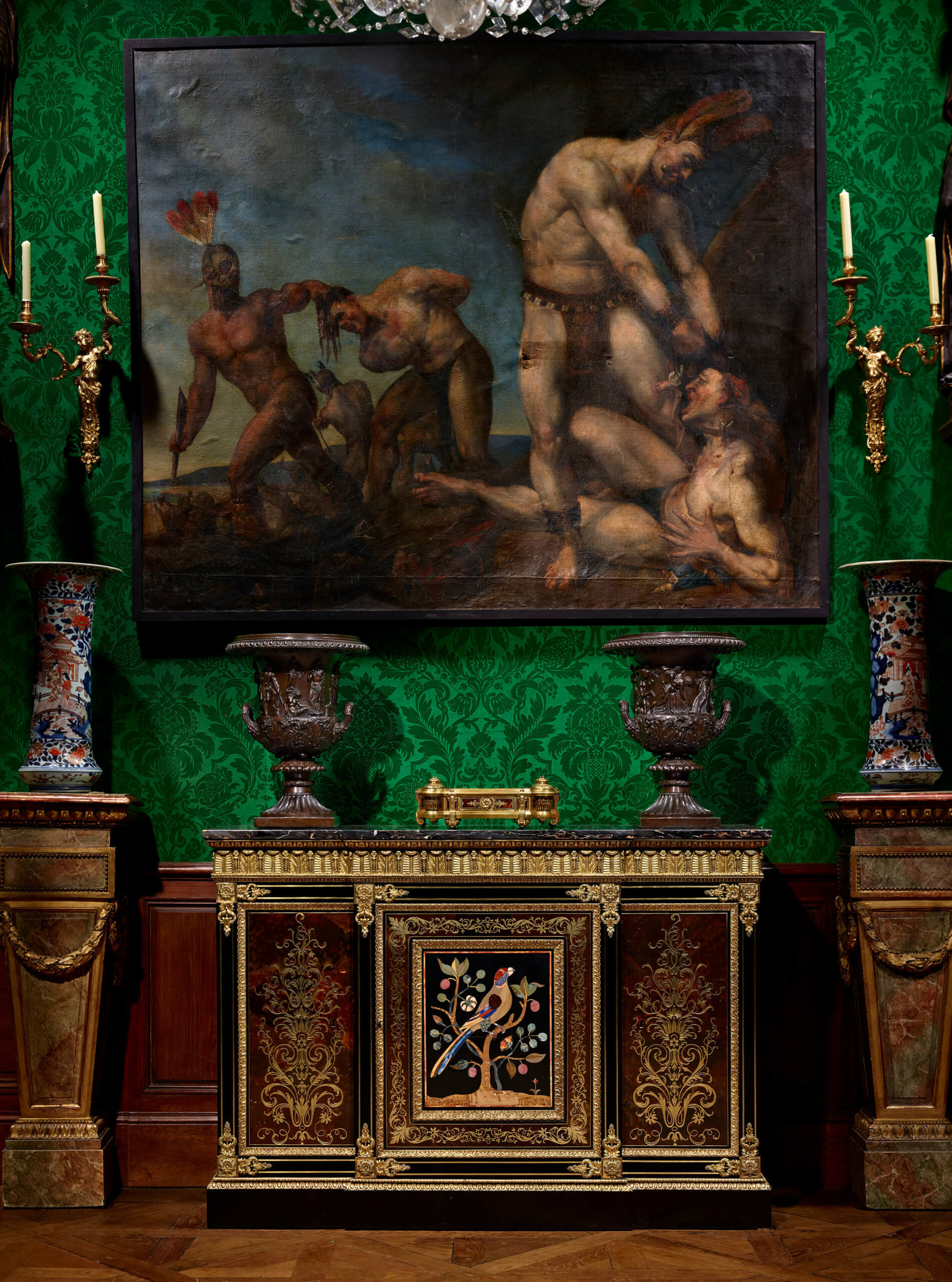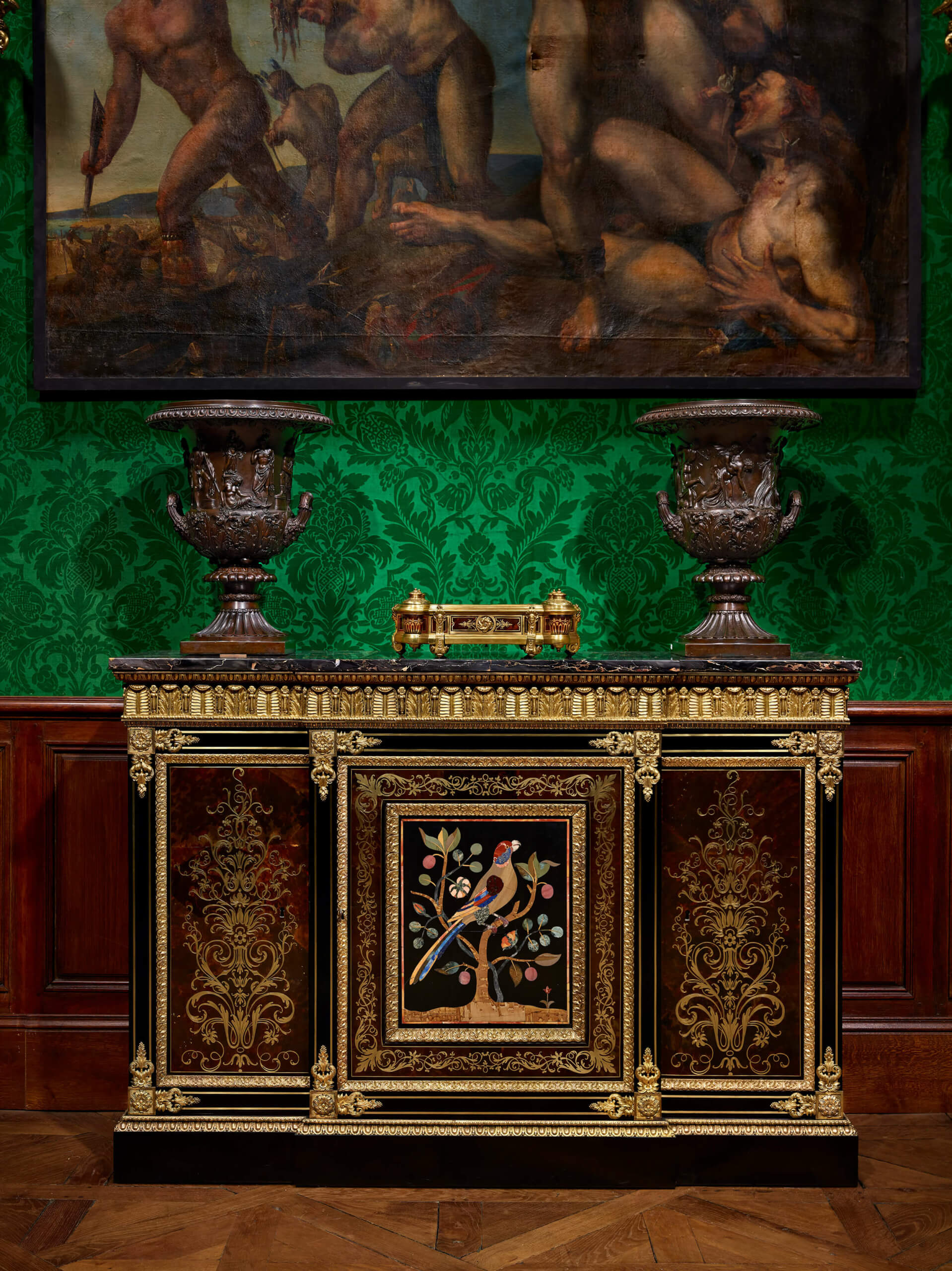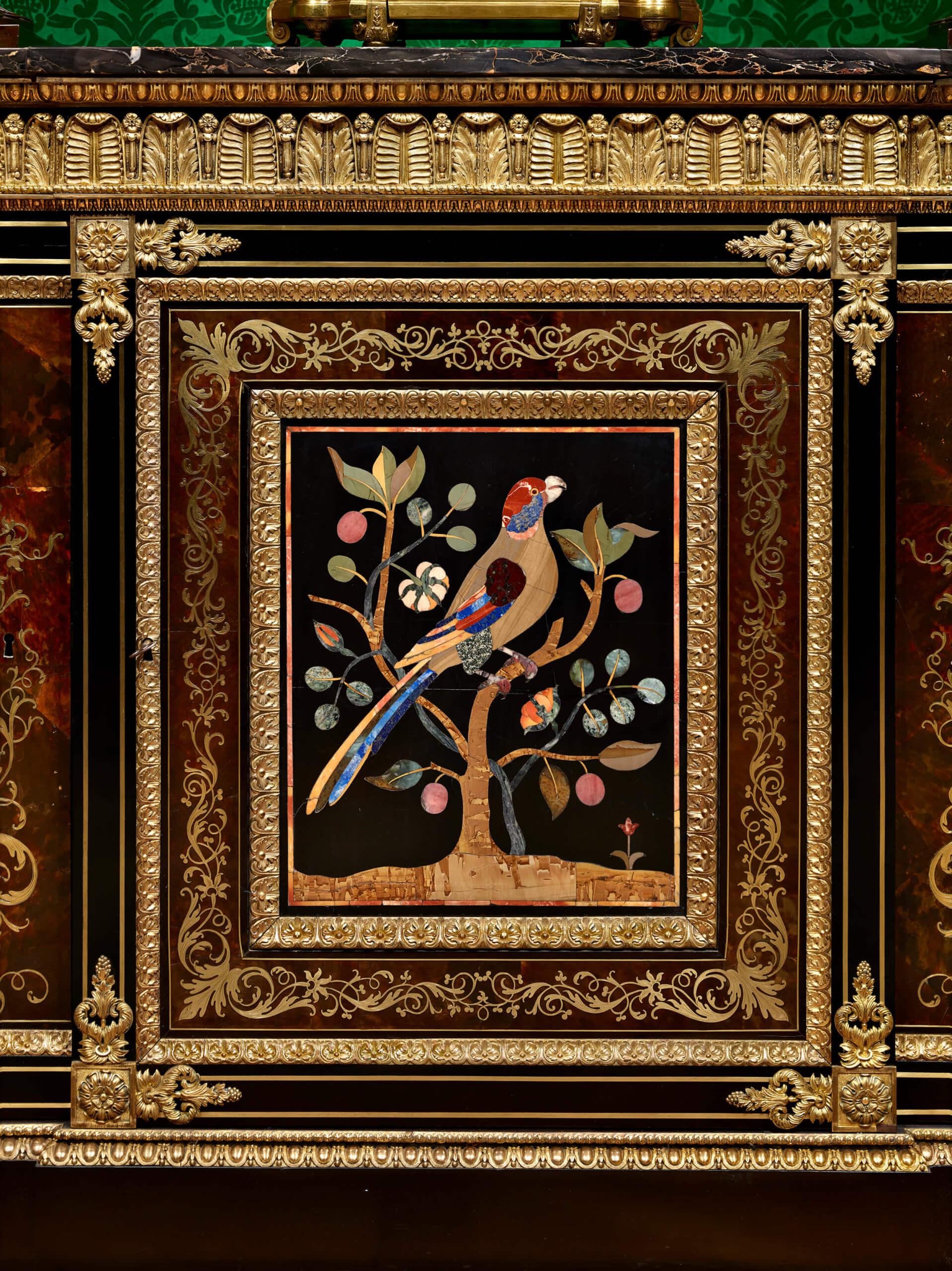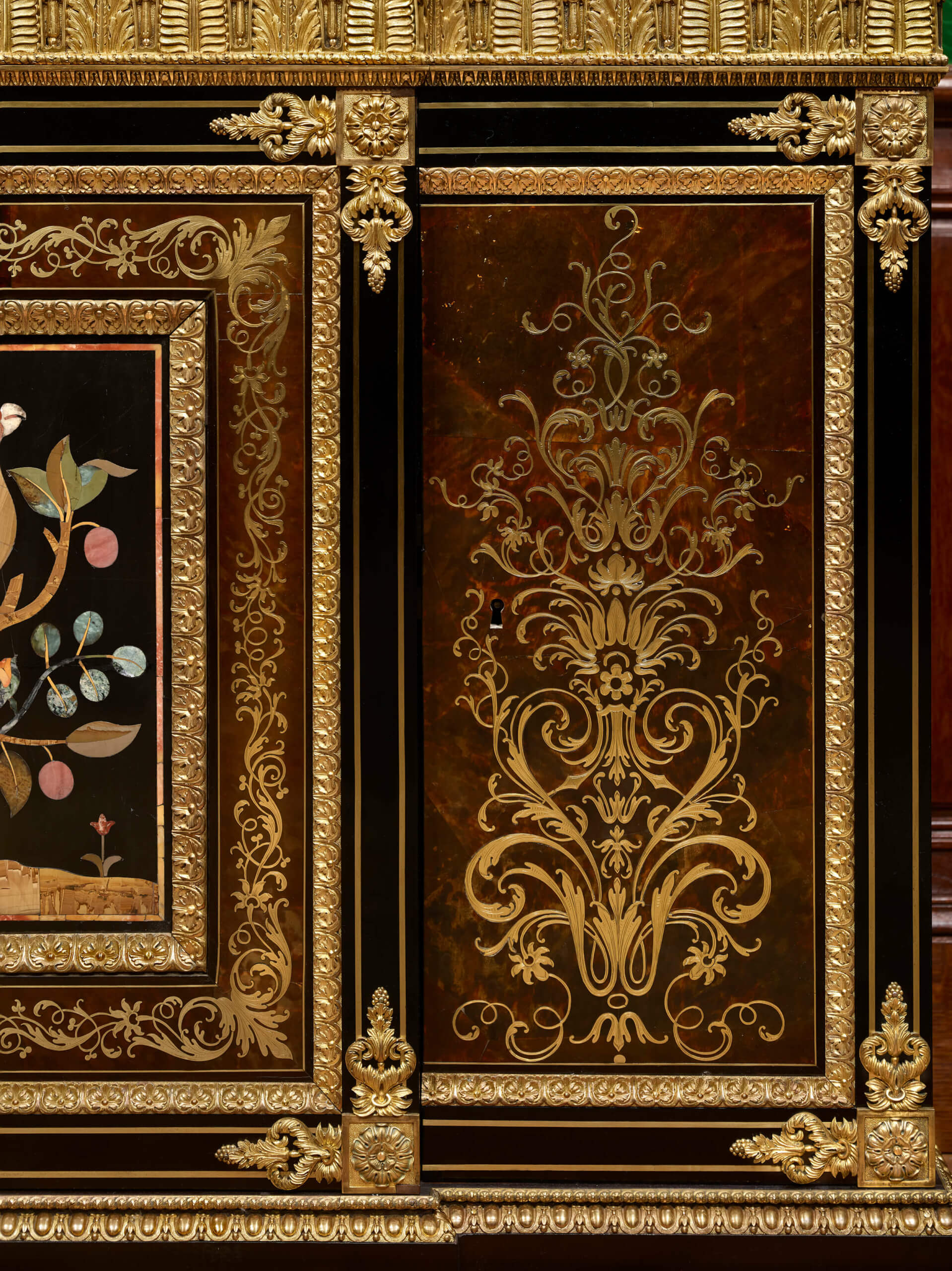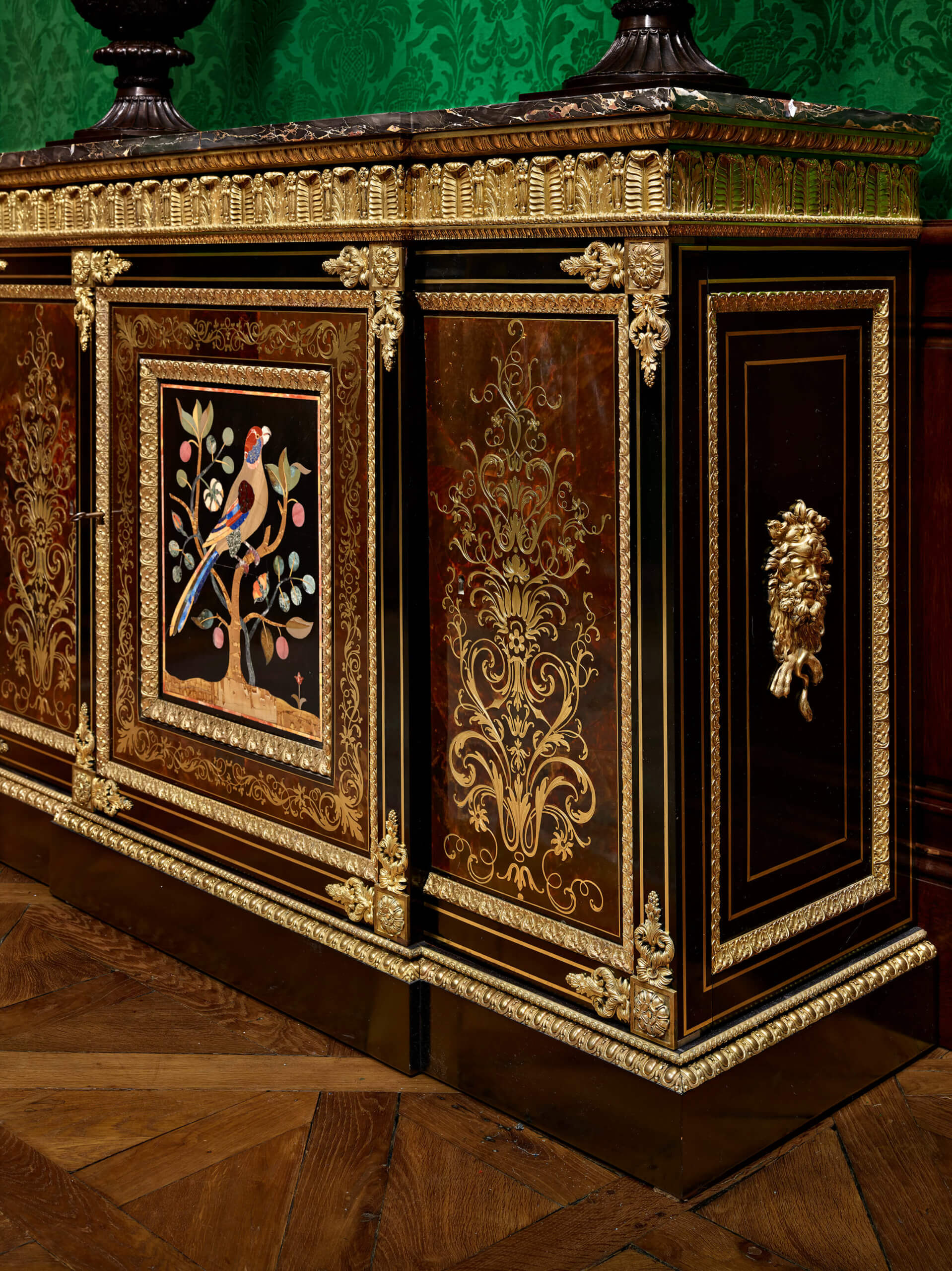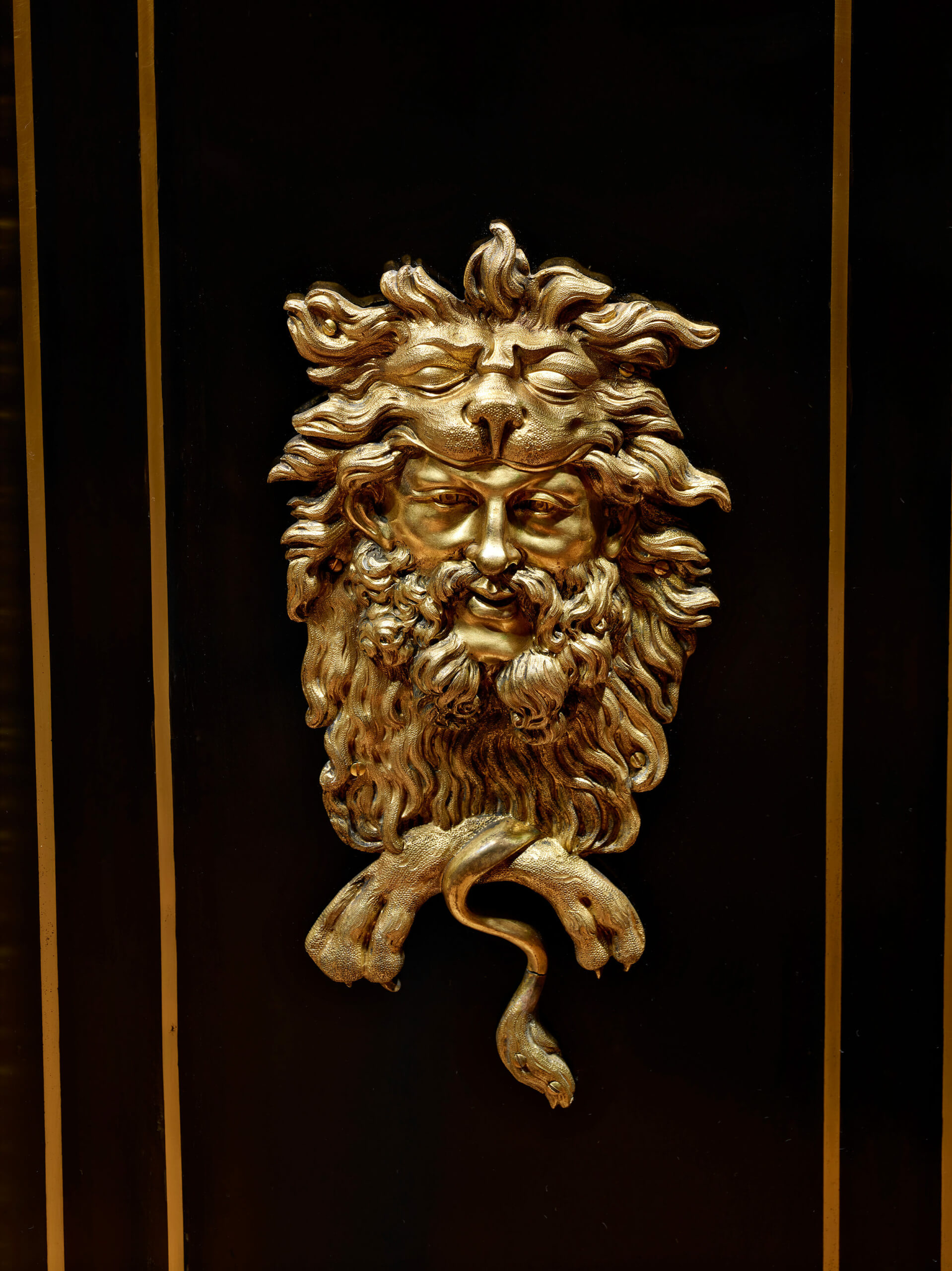

Oak frame; ebony veneer; “première partie” copper and tortoiseshell marquetry; brass fillets; metal; Portor marble.
Pietra dura panel adorned with parrot perched on a shrub: Florence, late 17th century.
H. 101.5 cm. (40 in.); W. 144.5 cm. (57 in.); D. 48 cm. (19 in.).
STAMPED: E. LEVASSEUR twice visible on the carcass under the marble top.
MARKS & INSCRIPTIONS: Morant & sons/91, New Bond Street [London], inscription printed in black and capital letters on a rectangular beige label stuck under the central panel in pietra dura and its bronze framework.
PROVENANCE: private collection.
COMPARATIVE LITERATURE: Alexandre Pradère, “Boulle, du Louis XIV sous Louis XVI”, L’Objet d’art, n° 0, June 1987, p. 56-67; M. Aldrich, “A Setting for Boulle Furniture: The Duke of Wellington’s Gallery at Stratfield Saye”, Apollo, June 1998, p. 20-22.
“Boulle” marquetry furniture was emblematic of the reign of Louis XIV and continued to fascinate great aristocrats, ministers and most of all great financiers well into the 18th and 19th centuries, prompting renowned cabinetmakers—the most important and inventive of whom were indisputably the Levasseur – to specialize not only in the restoration of authentic pieces of furniture by André-Charles Boulle but also in their reproduction, which often went beyond mere pastiche and gave rise to full-fledged creations, to which the quite architectural waist-high piece presented here indisputably belongs.
The Levasseur dynasty, which was active in Paris between 1750 and 1840, for over three generations, is well known for its role in the production and restoration of pieces of Boulle furniture, but the biographies of the three main protagonists have only been superficially dealt with so far and their in-depth study remains to be done.
The best known of them is the grandfather, Etienne Levasseur (1721-1798), who, according to a legend forged by his grandson, was supposed to have been trained by Boulle; instead, it was more likely to have been one of Boulle’s sons in the 1740s. He received his mastership in 1767. Although his stamp can be found on a number of furniture pieces in marquetry or mahogany, he mainly produced luxury pieces (particularly lacquered ones) that were destined to Parisian marchands merciers, such as Darnault and Julliot.
